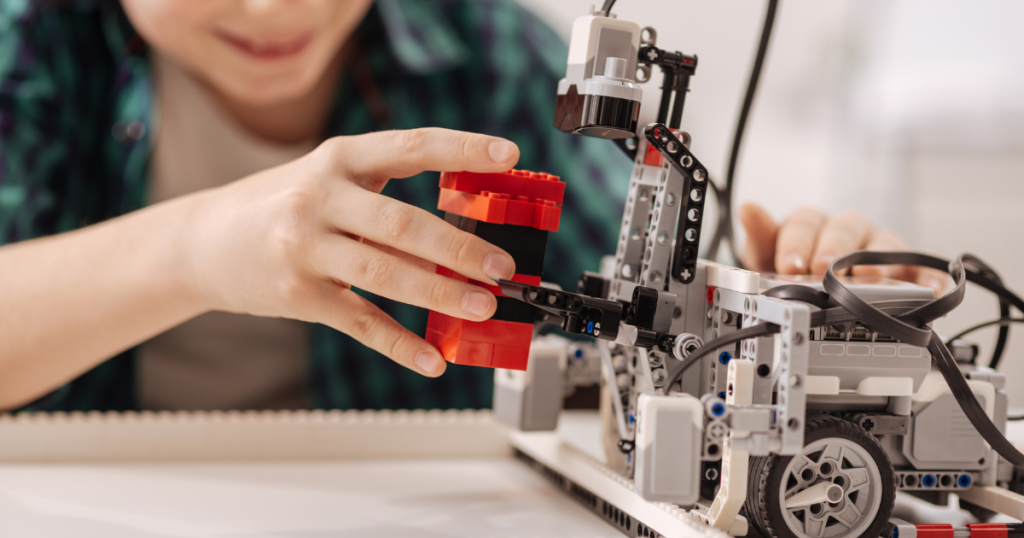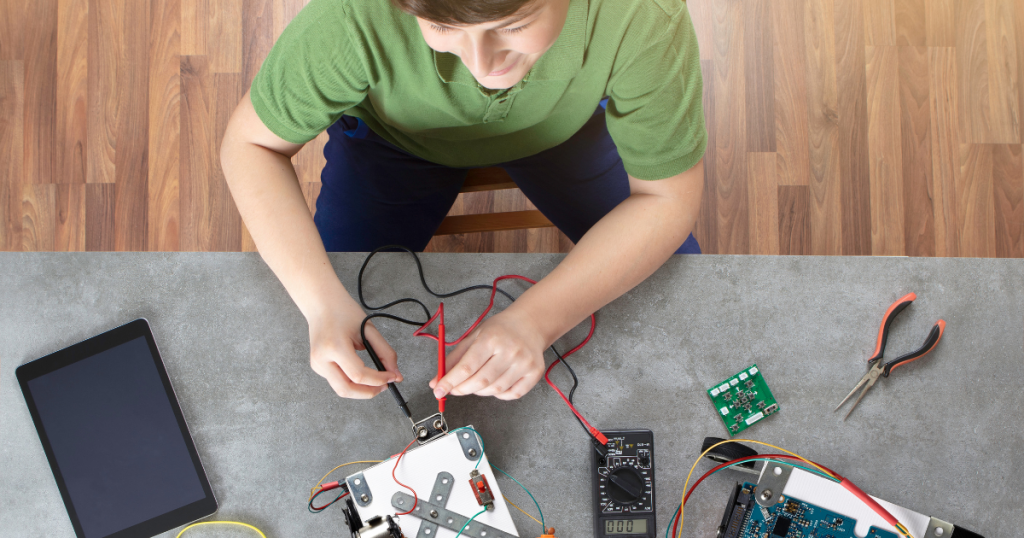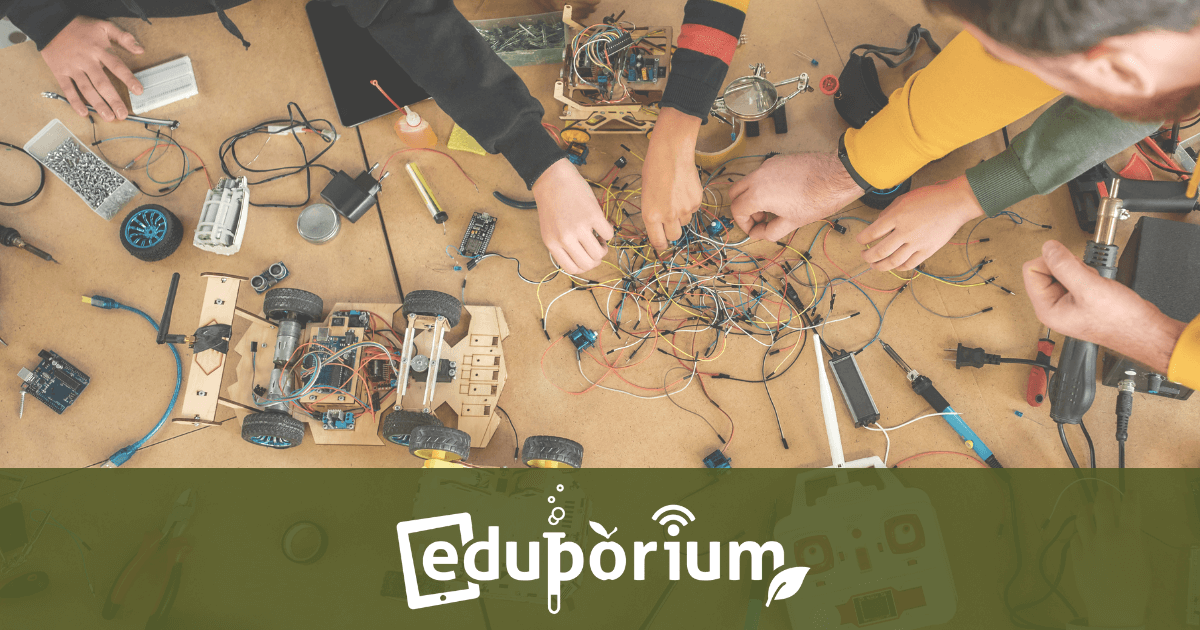Hands-on interaction is one of the major benefits that students receive from using STEAM tools in their classrooms. But how do those skills that students learn from using STEAM solutions translate into the real world? There are many connections, and one potential way is helping them think like entrepreneurs. In fact, incorporating an entrepreneurial mindset into STEAM education often substantially enhances how students prepare for innovation in the future.
As we know, STEAM tools help teachers put a real-world spin on learning. Integrating STEAM in classroom learning can get students out of the two-dimensional world of paper and whiteboards and into more three-dimensional experiences, using anything from robots to lasers and models. In memorizing times tables, for example, students can write simple programs telling robots to drive toward the correct equation. Or, while exploring art history, they could examine a VR representation of the Mona Lisa. Although there is value in knowing how to fly a drone or use a 3D printer, students also need to be able to bring these skills outside classrooms and makerspaces and into their future workplaces. That's where the entrepreneurial mindset comes in.
What is an entrepreneurial mindset?
The term “entrepreneurial mindset” is an increasingly popular buzzword throughout education, as research continues to show the benefits of developing tangible skills that apply outside the classroom. But what exactly does this mean? Summarized as “a growth-oriented perspective through which people collectively promote flexibility, creativity, continuous innovation, and renewal,” using an entrepreneurial mindset means believing in the possibility of improvement—and that one can make it happen through one’s own efforts. People with an entrepreneurial mindset are problem solvers who do not give up when they're faced with a challenge. They use creative, flexible thinking to discover and maximize opportunities, and they believe in their ability to grow. Approaching STEM education with this mindset can help students build confidence in their potential to cultivate and apply new skills.
Innovation
Although standardized testing allows teachers to effectively measure student progress, it can also hinder the outside-the-box thinking they use to innovate. Conversely, utilizing an entrepreneurial mindset helps them value innovation—as do many STEAM tools for the classroom. Many classroom robots—including most of our offerings—provide a plethora of ways for students to interact with technology. These STEAM solutions include everything from creating paper drawings and coding with wooden blocks to exploring text-based programming languages for advanced students.

To interact with these robots, innovation is key for all students. While the various curricula that come with many STEAM kits do offer initial guidance, these classroom technologies also give students a whole lot of creative freedom and it’s up to them to decide what to do with it. Will they tell a story? Design a logo? Or even turn common classroom materials into a keyboard? With an entrepreneurial mindset that promotes unconventional thinking, students can unlock new capabilities in their STEAM tools and their minds.
The more students practice innovation in their classroom, the more natural it becomes in their day-to-day lives. As this evolves, students develop the creativity they'll need for problem solving at home, at school, or (eventually) at work. When they experience the possibilities that STEAM tools help unlock, they'll see that, with a little initiative and imagination, they can solve any problem that comes their way. Combining STEAM solutions with an entrepreneurial mindset helps students discover their creative potential and stand out as leaders and progress-makers in their future careers.
Failure
Failure is another key component of any innovative process. Many students fear getting a big red “F” at the top of their test or stumbling through a presentation. A fear of failure might prevent many of us from taking risks, even after graduating and following a career path. It can also make students less likely to confidently take a controversial position in an essay, guess when they don’t know an answer, or even talk to new kids.
Embodying an entrepreneurial mindset, however, can make failure far less scary for students. Approaching problems like entrepreneurs, who know their abilities can evolve, means failure is just part of achieving the ultimate goal. In other words, to someone with this mindset, failure does not demotivate; it teaches.
This aspect of the entrepreneurial mindset goes hand-in-hand with STEAM learning. When K–12 students experience failure, such as writing a program that doesn’t work, we want them to try again. With STEAM tools that include helpful tutorials and different levels of difficulty, failures become much more manageable because students have the resources to fix their mistakes. Giving up is never conducive to learning, but an entrepreneurial mindset can help. When students become comfortable with failure, they seek opportunities to take risks, and risks are how great advances begin.
Reinforcement
How often do students wonder how they will use algebraic equations or grammar rules in the real world? With an entrepreneurial approach to STEAM education, they’ll better understand exactly how their studies apply to the real world. And, in remembering what they’ve learned, they can defer to it throughout the year, in other classes, and after graduation.

Studies show that applying an entrepreneurial mindset can help strengthen their overall mindset and drive entrepreneurial success. In other words, the more students apply their creativity to tangible problems, such as programming drones or making prototypes with a 3D printer, the more likely they are to bolster critical thinking skills that define being an entrepreneur.
Even better, hands-on STEAM tools are adaptable for children who have different learning styles, keeping them engaged and enhancing the lesson. After all, what is a student more likely to remember: the time they watched a slideshow about their solar system or the time they watched a robot carry the Earth around the Sun? By making learning objectives come alive and engaging the senses, teachers can help reinforce their students’ abilities to generate ideas and see solutions, which helps create the entrepreneurs of tomorrow.
An entrepreneurial mindset for the future
Beyond learning STEAM principles, using technology means that students have the chance to refine their entrepreneurship with creativity and practice. Recently, we saw one teacher challenge all his students to create a prototype accessory for their smartphones. The kids ended up making amplifiers for their phones’ speakers, magnetic or suction-based holders, unique charging stations, and more. Since this assignment required considering market gaps and applications for STEAM skills, they used an entrepreneurial mindset to implement knowledge. And, this is a perfect example of how the “real world” students are looking for is right in their classrooms. Sometimes, it just takes integrating the right tools and opportunities to help them thrive both inside and outside of it.
If you’re looking to get students more interested in STEAM or develop an entrepreneurial mindset, contact us for guidance on how to set up a makerspace or integrate tech tools in the classroom. For all the latest STEM, EdTech, and 21st century teaching news, find us on Twitter and Instagram. Like us on Facebook, too, or sign up for our newsletter for our latest product announcements and offerings. If you would like to share your thoughts on this topic, message us on social media or comment below.



